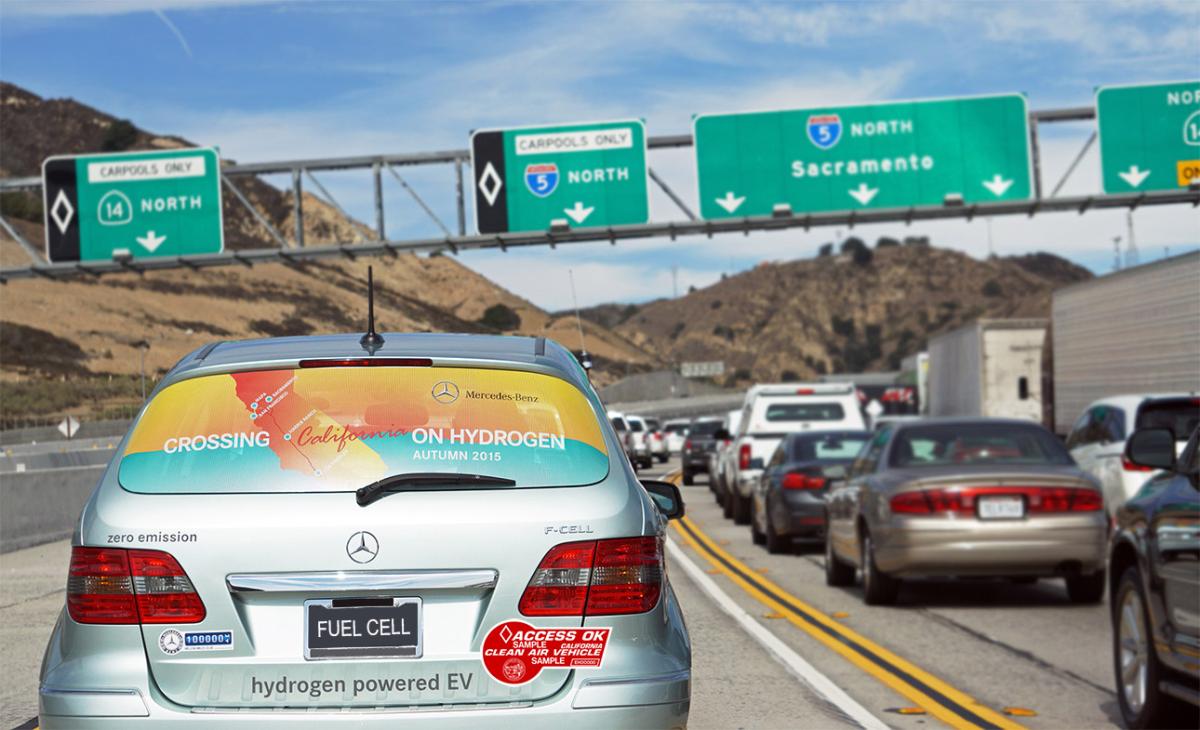Environment

A fuel cell creates electricity from a chemical reaction, not combustion. You get awesome performance, an incredible ride and a carpool sticker that tells the world you're aiming for zero (emissions, that is).
According to the U.S. EPA burning fossil fuels in cars, trucks, ships, trains, and planes is a leading source of air pollutants and greenhouse gas emissions. Hydrogen production is a chemical reaction; using heat and catalysts to release hydrogen molecules from natural gas or biogas, or using solar or wind energy to electrolyze water. The fuel cell in an FCEV also uses a chemical reaction to convert hydrogen and oxygen into electricity. From well to wheels, FCEVs using hydrogen create almost zero air pollutants and greatly reduce GHG emissions.
ENERGY SECURITY
Energy security can be simply defined as the security of our energy supply.
- Who controls it and are they dependable?
- Is the energy system robust?
- And can it recover from a disruption?
Because hydrogen can be made in different ways and from different sources, including renewables, it is a potentially robust contribution to energy security.
Making hydrogen locally, robustly and quickly contributes to energy security. UC Irvine’s National Fuel Cell Research Center recently released a study on renewable hydrogen production in California, noting that, “with appropriate policy support, the renewable hydrogen sector can reach self-sustainability…by the mid- to late 2020s.”
Unplugged

You get the best of both worlds: performance, range and refill time similar to combustion vehicles, and the quiet operation, zero emissions and power of electric drive.
FCEVs accelerate quickly and easily cruise at highway speeds. Their MPG equivalent is impressive—two-to-three times as many miles as their combustion counterparts. Today's FCEVs have a range of about 300 miles on a full tank.
Inside, fuel cell electric vehicles are as spacious and comfortable as any other vehicle. They have room for four-to-five passengers and plenty of cargo space. The controls are all familiar, although the dashboard gauge displays kilowatts instead of RPMs. Many FCEV drivers and passengers remark how quietly their car or bus runs.
INCENTIVES

Travel solo in the carpool lane in a fuel cell electric vehicle. FCEVs owners can apply for a red or purple Clean Air Vehicle Decal so you can enjoy life in the fast(er) lane. And filing for your $4,500 rebate is pretty fast, too.
The Clean Vehicle Rebate Project (CVRP) promotes clean vehicle adoption by offering rebates of $4,500 (up to $7,000 based on income) for the purchase or lease of new, eligible zero-emission vehicles, including electric, plug-in hybrid electric and fuel cell vehicles. As long as funds are available, eligible California residents can follow a simple process to apply for a CVRP rebate after purchasing or leasing an eligible vehicle.
As of December 3, 2019, individual and business applicants are eligible to receive one CVRP rebate for the life of the program either via direct purchase and/or lease.